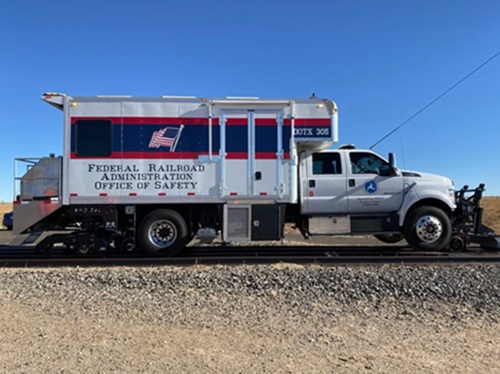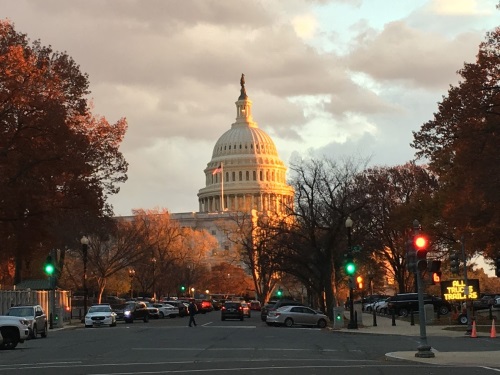The five-year, $494 billion surface transportation bill released by the Democratic majority within the House of Representatives’ Transportation and Infrastructure committee on June 3 aims to direct monies from the Highway Trust Fund to a spate of new formula and discretionary grant programs.
Dubbed the Investing in a New Vision for the Environment and Surface Transportation or INVEST in America Act, out of the proposed $494 billion in total funding from FY 2021 to FY 2025 for highway, highway safety, transit, and passenger rail programs the bill would provide $411 billion in contract authority out of the HTF.

Combined with general fund authorizations, the modal breakdown is as follows:
- $319 billion for the Federal-aid highway program under the Federal Highway Administration.
- $105 billion for transit programs under the Federal Transit Administration.
- $4.6 billion for highway safety programs under the National Highway Traffic Safety Administration.
- $5.3 billion for motor carrier safety programs under the Federal Motor Carrier Safety Administration.
- $60 billion for passenger rail programs under the Federal Railroad Administration plus Amtrak.
For the first year of the proposed bill, $83.1 billion is provided essentially as an extension of the FAST [Fixing America’s Surface Transportation] Act to ensure that states, cities, tribes, territories, and transit agencies can continue to administer programs, advance projects, and preserve jobs in the aftermath of the COVID-19 pandemic.

That dovetails with request to Congress made by the American Association of State Highway and Transportation Officials on March 18 for a $50 billion “backstop” to help state departments of transportation cope with severe near- and long-term revenue losses due to the COVID-19 outbreak.
The committee noted that this “year one” funding allows highway, transit, and safety funds to be made available at 100 percent federal share, with about a quarter of total funding available for additional eligibilities, including salaries and operating expenses.
In a statement released June 3, Jim Tymon, AASHTO’s executive director, expressed his appreciation to Rep. Peter DeFazio, D-Ore., chair of the House T&I committee, for introducing this important piece of legislation – especially in terms of the COVID-19 fiscal support contained within it.

“Reauthorizing the federal surface transportation programs before they expire this fall is a priority for state DOTs and this is the first step in that process in the House,” he said. “We appreciate that Chairman DeFazio’s proposed legislation recognizes the challenging financial situation that state DOTs are in now due to the national COVID-19 response.”
Yet Tymon noted that it is “disappointing” that this critical bill was not developed in a bipartisan manner, emphasizing that transportation has “traditionally been a bipartisan issue” and both sides of the aisle must work together to get a surface transportation bill “over the finish line” – similar to the unanimous passage by the Senate Committee on Environment and Public Works of a surface transportation bill in July 2019.
“We remain encouraged that infrastructure appears to be a priority in both the House and the Senate,” he said. “We look forward to working with Congressional leaders to enact legislation before the expiration of the FAST Act that will fully fund the Highway Trust Fund and ensure the nation’s transportation system remains the backbone to economic vitality and overall quality of life.”

Rep. DeFazio in a statement that he believes the INVEST in America Act is “our opportunity to replace the outdated systems of the past with smarter, safer, more resilient infrastructure that fits the economy of the future, creates millions of jobs, supports American manufacturing, and restores U.S. competitiveness.”
However, a joint statement issued by the committee’s minority leadership – Ranking Member Rep. Sam Graves, R-Mo., Rep. Rodney Davis, R-Ill., and Rep. Rick Crawford, R-Ark. – criticized the “one-sided construction” of the House’s surface transportation package.
“Committee Republicans were not involved in the development of this bill,” they said. “Democrats and Republicans alike know the only way to complete a reauthorization is if we work together.”
Based on analysis of the bill by AASHTO, the biggest changes proposed by the House T&I’s surface transportation package revolve around the addition of new formula and discretionary grant programs. In fact, the bill calls for a study led by the FHWA and AASHTO to examine how to “modernize” surface transportation funding formulas and factors.
Major changes include:
- Requiring analysis on state of good repair and operational improvements to existing facilities before building any new highway capacity with National Highway Performance Program or NHPP funds.
- Requiring states to spend 20 percent of their NHPP and Surface Transportation Block Grant Program (STBGP) dollars, excluding suballocation, on bridge repair and rehabilitation projects; amounting to $28 billion between FY 2022 and 2025. The bill also increases the off-system bridge set-asides to $1 billion per year compared to the $770 million provided by the FAST Act.
- Mandating the U.S. Department of Transportation to establish a new greenhouse gas or GHG emissions performance measure based on carbon emissions per capita on all public roads and creates a new $8.4 billion formula program to spur carbon emission reductions across a wide range of highway, transit, and rail projects. Top-performing states are provided funding flexibility while low-performing states must put in 10 percent of their STBGP dollars, excluding suballocation, towards carbon reduction.
- Creating a new $6.3 billion formula program to fund resilience and emergency evacuation needs, which will require states and Metropolitan Planning Organizations to develop an “infrastructure vulnerability assessment” to guide investments via this new program.

According to a summary of the bill, the House’s proposed legislation would also fund a bevy of new permanent and one-year discretionary grant programs.
The proposed package would also boost transit funding by about 50 percent; authorize a five-fold funding increase for both passenger rail and for zero emission bus competitive grants; and would increase the federal share of Capital Investment Grants to 80 percent.
Other potential grant programs include:
- Providing more than $9 billion over the life of the bill for large highway, transit, and freight projects that cannot be funded through annual apportionments or other discretionary sources.
- Giving high-performing localities – as determined by USDOT – access to $750 million in direct Federal-aid Highway Program funding over four years, bypassing states.
- Issuing $600 million per year for local government applicants via a Community Transportation Investment Grant program modeled after Virginia’s Smart Scale program.
- Providing $400 million per year to a new Federal Lands and Tribal Major Projects grant program – a program that would require a 50/50 split of grant funds among tribes and Federal lands agencies – along with another $50 million per year for Tribal High Priority Projects on a discretionary basis, for grants of a maximum size of $5 million.
- Issuing $350 million per year to fund an Electric Vehicle Charging and Hydrogen Fueling Infrastructure Grants program.
- Providing $250 million per year through Community Climate Innovation Grants to non-state applicants for highway, transit, and rail projects, provided they reduce GHGs.
New single-year discretionary grant programs within the bill include: $250 million in Gridlock Reduction grants to reduce urban congestion in large metropolitan areas; $250 million in Rebuild Rural Grants; $250 million in Active Transportation Connectivity grants for pedestrian and bicycle projects and related planning, including complete streets planning; and $250 million in grants to construct and improve truck parking facilities.
Other proposals within this legislation would “dramatically increase” funding for development of charging stations and other alternative fueling options for electric and zero-emissions vehicles, address rising rates of pedestrian and bicyclist deaths, as well as double the funding for technology deployment with a focus on specific construction materials and practices.
 Top Stories
Top Stories
State DOTs Making Preparations for Wintertime Operations
December 12, 2025 Top Stories
Top Stories

